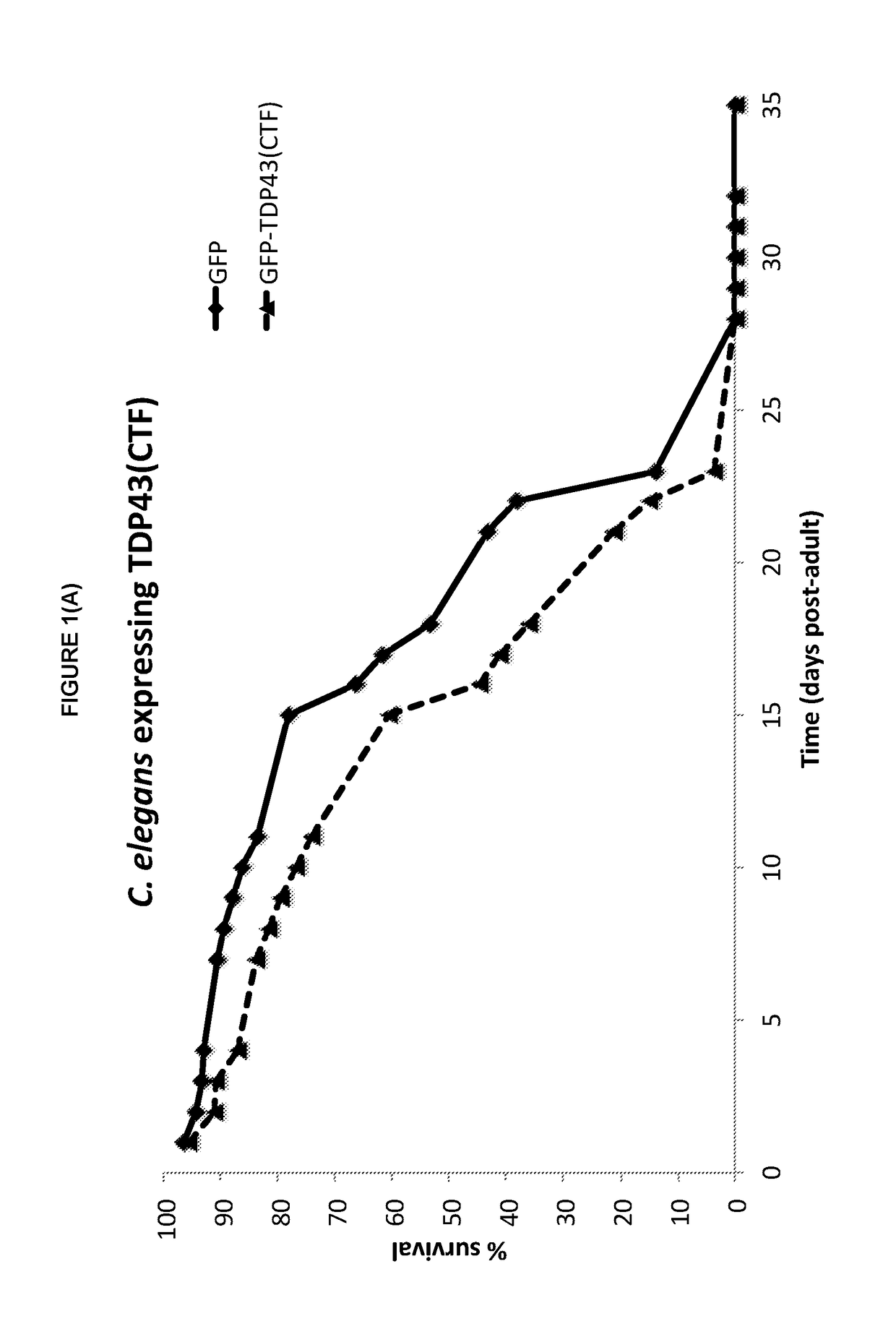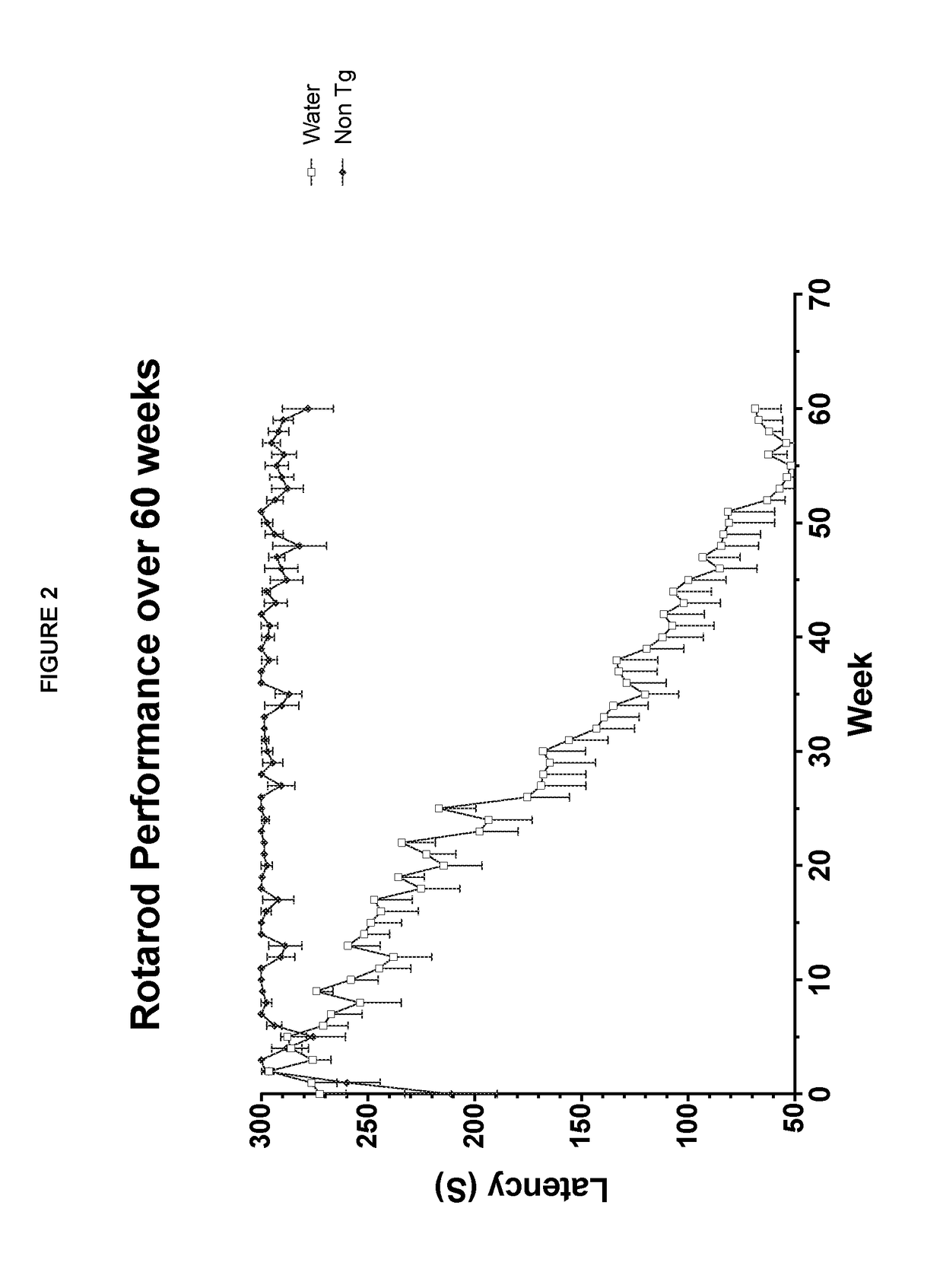Tacrolimus for treating TDP-43 proteinopathy
a proteinopathy and tacrolimus technology, applied in the field of tacrolimus, can solve the problems of loss of the ability of the brain to start and control voluntary movement, affect all muscles under voluntary control, and affect the quality of life and longevity, and achieve the effect of lowering the cost burden of such diseases and improving the quality of li
- Summary
- Abstract
- Description
- Claims
- Application Information
AI Technical Summary
Benefits of technology
Problems solved by technology
Method used
Image
Examples
example 2
Tacrolimus in Mice Expressing WT and / or Q331K TDP-43
[0103]Materials and Methods
[0104]Mice
[0105]Transgenic mice expressing wild-type human TDP-43 or human TDP-43 carrying a point mutation (Q331K) have been developed and described by the Shaw lab (see Arnold et al., 2013, Proc. Natl. Acad. Sci. 110(8):E736-45 and Mitchell et al., 2015, Acta. Neuropathol. Commun. 3(1):36; the disclosures of which are incorporated herein by reference). The inserted constructs placed the cDNA for N-terminal myc-tagged wild-type or mutant TDP-43 under the control of the mouse prion promoter, resulting in expression in the CNS. Because the constructs do not contain the 3′UTR of the human TDP-43 gene, TDP-43 mRNA levels are not autoregulated and therefore TDP-43 levels in the transgenic strains reach 2-3 fold above endogenous levels.
[0106]Hemizygous lines for each construct were established (TDP-43(WT) and TDP-43(Q331K) respectively), and crossing these lines produced compound hemizygous animals (TDP-43(WTx...
example 3
Unit Dosage Form of the Invention
[0131]A hard gelatine capsule was filled with the following composition:
FormulationReferenceComponent(%)FunctionStandardTacrolimus0.30Active ingredientUSPLactose monohydrate89.45DiluentPh EurHydroxypropylmethyl6.00BinderPh EurcelluloseCroscarmellose sodium4.00Super-disintegrantPh EurMagnesium stearate0.25LubricantPh EurEthanolqsBinder fluid
[0132]One capsule as above containing 0.3 mg tacrolimus was administered daily to healthy human volunteers for three successive days. No significant changes in blood TNF-α levels occurred as a result of the administration. Similarly, no change in TNF-α levels occurred as a result of administering 0.6 mg daily of tacrolimus to healthy volunteers. The average trough level of tacrolimus (level after 24 hours of administration of each dose) observed was approximately 220 pg / mL. The average peak level of tacrolimus observed was approximately 3700 pg / mL and the average area under the curve was approximately AUC O_t=23500...
PUM
| Property | Measurement | Unit |
|---|---|---|
| concentration | aaaaa | aaaaa |
| body weights | aaaaa | aaaaa |
| concentration | aaaaa | aaaaa |
Abstract
Description
Claims
Application Information
 Login to View More
Login to View More - R&D
- Intellectual Property
- Life Sciences
- Materials
- Tech Scout
- Unparalleled Data Quality
- Higher Quality Content
- 60% Fewer Hallucinations
Browse by: Latest US Patents, China's latest patents, Technical Efficacy Thesaurus, Application Domain, Technology Topic, Popular Technical Reports.
© 2025 PatSnap. All rights reserved.Legal|Privacy policy|Modern Slavery Act Transparency Statement|Sitemap|About US| Contact US: help@patsnap.com



